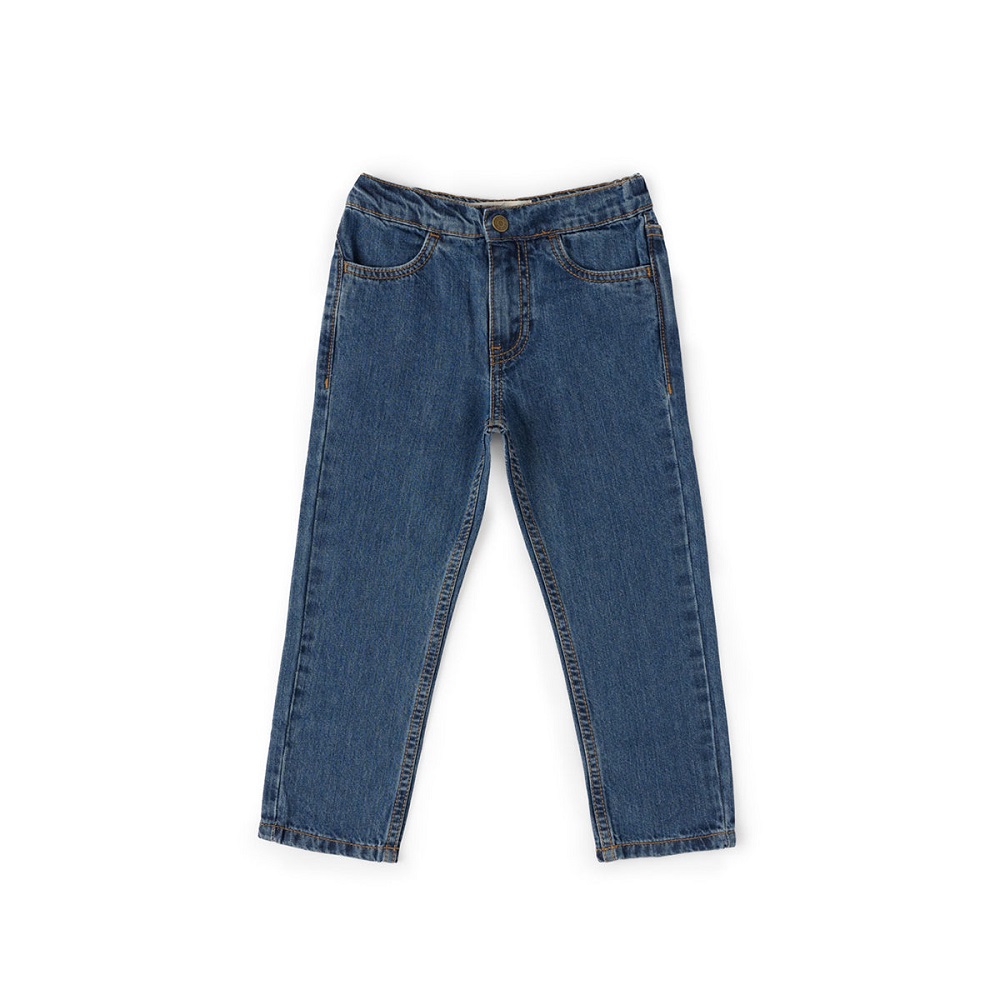The Denim Dilemma: How Often Should You Wash Your Jeans?
Jeans dominate wardrobes worldwide, offering comfort and style in one durable package. Yet, a persistent question plagues denim lovers: how often should you wash your jeans? This seemingly simple query sparks heated debates among fashion enthusiasts, laundry experts, and everyday wearers alike. Some staunchly defend the “never wash” approach, claiming it preserves the perfect fit and fade. Others insist on regular cleaning for hygiene and freshness.
The truth, as with many things, lies somewhere in the middle. Factors like your lifestyle, the type of denim, and personal preferences all play crucial roles in determining the ideal washing frequency. In this blog, we’ll cut through the confusion and explore the pros and cons of various washing schedules. We’ll uncover expert tips to maintain your jeans’ shape, color, and integrity while keeping them fresh. Whether you own premium raw denim or live in your favorite everyday pair, this guide will help you strike the perfect balance between cleanliness and denim care.
The Case for Infrequent Washing
Denim purists argue that jeans require minimal washing. They claim that frequent laundering breaks down the fabric, fades the color, and alters the fit. Raw denim enthusiasts take this approach to the extreme, often going months or even years without washing their jeans. This method allows the denim to develop unique wear patterns and personalized fades.
The Hygiene Perspective
On the flip side, hygiene-conscious individuals advocate for more regular washing. Jeans, like any clothing, accumulate sweat, skin cells, and environmental dirt over time. Regular cleaning helps eliminate odors and bacteria, ensuring your denim stays fresh and hygienic.
Finding the Middle Ground
For most people, the ideal washing frequency falls somewhere between these two extremes. Experts generally recommend washing your jeans every 4-6 wears. However, this guideline varies based on several factors:
- Activity Level: If you engage in sweat-inducing activities or work in dirty environments, more frequent washing may be necessary.
- Climate: Hot, humid conditions may require more frequent cleaning than cooler, drier climates.
- Denim Type: Raw denim benefits from less frequent washing, while pre-washed or stretch jeans can handle more regular laundering.
- Personal Preference: Some people simply feel more comfortable with freshly washed jeans.
Consider the Frequency of Use
The frequency of washing your jeans depends on how often you wear them. Consider the following factors:
- Regular wear: If you wear jeans daily or several times a week, they may require more frequent washing due to accumulated dirt, sweat, and odors.
- Occasional wear: If you wear little pocket on jeans infrequently or rotate through multiple pairs, washing them less frequently is acceptable, as they have less exposure to dirt and body oils.
Assess the Fabric and Color
Different denim fabrics and colors may require varying care. Consider these aspects:
- Raw or unwashed denim: Raw denim is untreated, and washing it frequently can hinder the natural fading and creasing process that contributes to its character. Washing raw denim as little as possible is recommended to maintain its unique appearance.
- Dark or deep-colored denim: Dark or indigo-colored jeans are prone to color bleeding, especially during the initial washes. Washing them less frequently reduces the risk of color transfer onto other garments.
- Stretch denim: Jeans with added stretch fibers may lose elasticity if washed too frequently. Washing them after several wears helps to maintain their shape.
Pay Attention to Odor and Stains
While there are no hard and fast rules, certain signs indicate that it’s time to wash your jeans:
- Unpleasant odor: Wash your jeans if they have developed an undesirable smell, indicating the presence of bacteria or sweat buildup.
- Visible stains: Stains, spills, or visible dirt on your jeans are a clear indicator that they require washing.
Employ Spot Cleaning and Freshening Techniques
Instead of washing your jeans every time they require a little refreshment, consider alternative strategies:
- Spot cleaning: Use a damp cloth or sponge with a mild detergent to target specific stains or areas that need attention without washing the entire pair.
- Odor elimination: Instead of washing, hang your jeans in a well-ventilated area to air them out and eliminate odors. Alternatively, lightly spritz them with diluted vinegar or a fabric freshener to neutralize any lingering smells.
Proper Jeans Care Techniques
Proper care techniques help maintain the quality and longevity of your creased jeans. Consider these tips:
- Turn jeans inside out: Turning your jeans inside out before washing helps preserve their color and minimize friction, reducing color loss and wear on the outer surface.
- Use cold water: Cold water slows color fading and minimizes shrinkage. Therefore, wash your jeans on a cold or delicate cycle to retain their original color and fit.
- Minimal detergent: Use a small amount of detergent specifically formulated for dark or denim garments. Excess detergent can leave residues and contribute to color fading.
- Avoid frequent tumble drying: Overexposure to high heat can shrink jeans and accelerate fabric wear. Instead, hang your jeans to air dry or use the tumble dryer sparingly with low heat settings.
- Minimal ironing: Jeans are meant to have a relaxed, lived-in appearance, so ironing is not typically required. If necessary, iron them inside out or use a low heat setting to minimize damage.
Exceptional Circumstances
Certain circumstances may require more frequent washing of jeans:
- Specific stains: Promptly wash jeans if they come into contact with substances like oil, paint, or food stains, as these can be difficult to remove later.
- Allergies or sensitivities: If you have skin allergies, sensitivities, or specific hygiene requirements, washing jeans more frequently may be necessary.
Things to note when washing jeans
Properly caring for your jeans and understanding how to wash them is essential for maintaining their color, fit, and overall quality. Denim is a durable fabric that requires specific care techniques to ensure its longevity and prevent unnecessary wear and tear.
Read and Follow Care Instructions:
Before washing your jeans, always check the care instructions provided by the manufacturer. Care labels may include specific washing instructions, temperature recommendations, and other relevant information. Following these instructions ensures that you are treating your jeans in a manner consistent with the manufacturer’s recommendations, helping to maintain their quality.
Sort Jeans Properly:
Proper sorting is crucial to avoid color bleeding and fabric damage. Consider the following sorting guidelines:
- Separate by color: Sort jeans into different piles based on color, specifically separating light and dark-colored jeans. This prevents dye transfer and maintains the original color integrity.
- Separate by fabric weight: If you have jeans of varying weights, separate them according to fabric thickness. Washing jeans of similar weights together helps prevent damage by reducing friction during the washing process.
- Handle embellished or distressed jeans with care: Jeans with special details like embroidery, studs, or distressed elements should be washed separately or placed in a laundry bag to protect them from snagging on other garments.
Zip and Button Up:
Before washing, ensure that all zippers and buttons on your jeans are securely fastened. This prevents the risk of snagging and damage to the fabric during the washing cycle.
Turn Jeans Inside Out:
Turning your jeans inside out before washing helps protect the outer surface, preserving the color and minimizing friction. This is especially important for jeans with distressed or faded finishes, as it prevents these areas from further wear and tear.
Use Cold Water:
To prevent color fading and minimize shrinkage, wash your jeans in cold water. Cold water is less harsh on denim fabric and helps maintain its color intensity for a longer period. Avoid using hot water unless explicitly recommended on the care label.
Conclusion
Determining how often to wash your jeans depends on various factors, including frequency of use, fabric type, color, odor, and stains. While there are general guidelines, ultimately, it’s a personal decision based on your comfort and hygiene preferences. By employing spot cleaning, freshening techniques, and proper care methods, you can extend the life of your jeans while ensuring cleanliness. Striking the right balance between washing frequency and denim care helps maintain the integrity, color, and fit of your jeans, ensuring they remain a durable and stylish staple in your wardrobe.
Ultimately, there’s no one-size-fits-all answer to how often you should wash your jeans. Listen to your denim. If they smell fresh and look clean, they probably don’t need washing yet. When they start to feel grimy or develop odors, it’s time for a wash.
Remember, jeans are meant to be lived in. They tell the story of your experiences, developing character with every wear. By finding the right balance between maintaining their integrity and keeping them clean, you’ll ensure your favorite jeans remain a staple in your wardrobe for years to come.
So, embrace your denim journey. Whether you’re a wash-every-week person or a once-a-year purist, wear your jeans with confidence, knowing you’ve found the washing routine that works best for you and your lifestyle.














